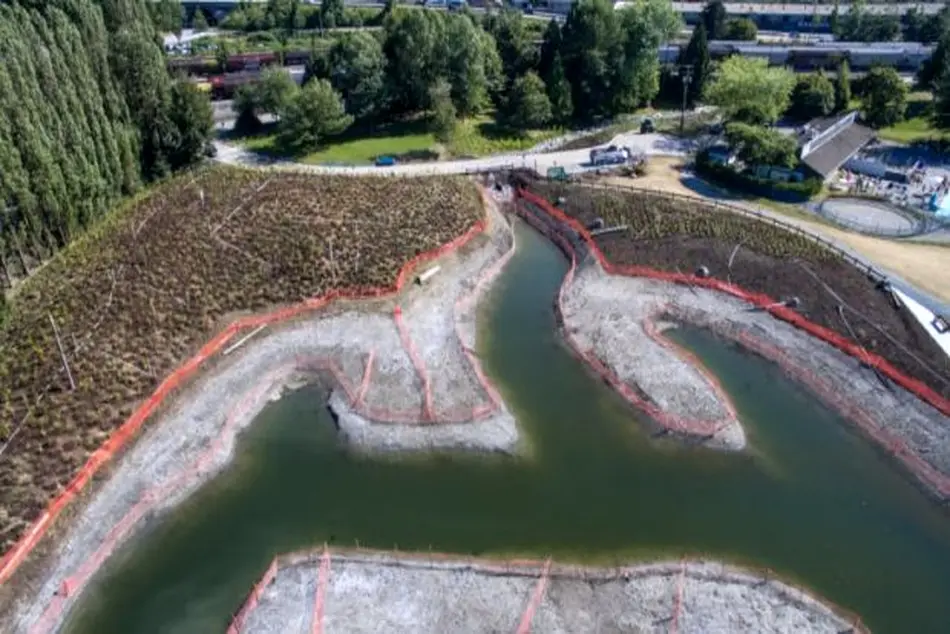Vancouver completes restoration project in New Brighton shoreline

The Vancouver Board of Parks and Recreation and the Vancouver Fraser Port Authority informed that the construction on the New Brighton Park Shoreline Habitat Restoration Project was completed, with final landscaping, native plant installations around the wetland and park feature construction activities wrapped up in early July.
The project supports the direction of the Vancouver Board of Parks and Recreation’s Strategic Plan, Rewilding Action Plan, and Biodiversity Strategy. It also implements the vision of the 2010 Hastings Park / Pacific National Exhibition (PNE) Master Plan and the 1997 New Brighton Park Master Plan.
The tidal wetland at New Brighton Park is anticipated to provide critical habitat for juvenile salmon that migrate along the Burrard Inlet shoreline as they head out to sea. With planting complete, this wetland is also anticipated to provide resting and feeding habitat for local shorebirds.
As informed, the focus for the summer and early fall is monitoring and maintenance to ensure the newly planted native trees, shrubs, marsh plants and grasses establish successfully. Temporary fencing will remain in place around the newly planted areas to protect the new plants. The temporary orange fence within the wetland is to deter Canada geese from feeding on the young marsh plants during this sensitive stage of establishment.
The two parties continue to work with Musqueam, Squamish, and Tsleil-Waututh First Nations to finalize this component of the project. It is anticipated that signs and other interpretive information focusing on the ecology of Burrard Inlet and current and historical First Nations values will be incorporated this fall.
Between November 21 and 25, 2016, at suitable night-time low tides, crews successfully opened the wetland’s east and west outlets to Burrard Inlet
This work was a major milestone for the Project as it was the first time since the mid-1960’s that this area has been opened back up (restored) to tidal influence. Canada geese and gulls were the first wildlife to visit the new wetland.
Other project features include the following:
- Installations of west coast native plant species including approximately 25,000 salt marsh plugs, 200 native trees and 4,000 coastal shrubs on the newly constructed wetland
- Installation of park features such as picnic tables, view decks and gravel pathways
- Installation of temporary and final fences to protect the sensitive wetland, particularly during the plant establishment phase
